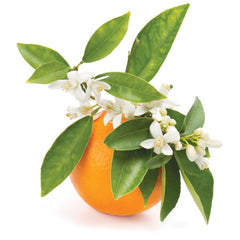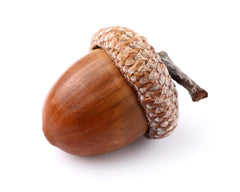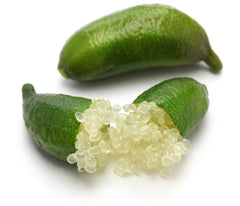What Does Oak Smell Like?
Click For Affordable Inspired Perfume Alternatives

In the heart of nature's grandeur, oak stands as a timeless symbol of strength and resilience, casting its majestic presence across dense forests and tranquil landscapes. This robust giant not only shapes the physical environment but also weaves an enchanting tapestry of fragrance that captures the very essence of its storied existence. Join us as we embark on a sensory exploration, unraveling the captivating aroma of oak—a fragrance that mirrors the enduring spirit of this mighty tree. From earthy richness to woody warmth, with smoky undertones and timeless strength, oak's olfactory symphony invites you to experience nature's powerful embrace.
What Does Oak Smell Like?
Oak, revered for its solidity and depth, boasts a fragrance that is a powerful blend of earthy richness and a subtle woody undertone. Imagine the robust embrace of aged wood with a hint of smokiness reminiscent of a crackling bonfire. Oak's scent is a celebration of resilience and warmth, providing a grounding and immersive olfactory journey.
Oak's Sturdy Presence
Step into the world of oak, where the fragrance is a sturdy presence, capturing the essence of a dense forest with trees standing tall and proud. Let's explore the aromatic marvel that defines the spirit of oak
.
Earthy Richness: A Forest Floor Symphony
As you approach oak, the first olfactory encounter is an earthy richness. Picture the scent of fallen leaves, damp soil, and the interplay of mossy undergrowth. Oak's fragrance is a forest floor symphony that immediately transports you to the heart of nature, enveloping you in a sense of grounded authenticity.
Woody Warmth: Fireside Comfort
Within the earthiness lies a subtle undercurrent of woody warmth. The scent is akin to the natural richness found in well-aged oak wood, creating a delicate balance that adds depth to the overall aroma. Oak's fragrance is a celebration of fireside comfort, a sensory journey that tempts the senses with its warm and embracing allure.
Smoky Undertones: Charred Elegance
Delve deeper into the scent, and you may discover smoky undertones. It's as if the fragrance carries the echoes of a distant bonfire, adding a layer of sophistication to the overall aroma. The smoky nuances dance gracefully with the earthy and woody character, creating a fragrant symphony that is both bold and refined.
Majestic Resilience: Timeless Strength
Oak's fragrance carries a majestic resilience, like the enduring strength of ancient trees standing against the test of time. The scent is grounding and empowering, making it a perfect companion for moments of introspection and connection with nature.
Oak's Olfactory Sonata
Hence, oak's fragrance is a sonata of earthy richness, woody warmth, smoky undertones, and majestic resilience. It stands as a testament to the enduring splendor of this mighty tree, offering an olfactory experience that is both powerful and timeless. Oak, with its robust and complex aroma, invites us to appreciate the strength found within its essence, a fragrant journey that unfolds with every immersive whiff.
Buy Tobacco & Oak Fragrance Oil
Brand: Supplies For Candles - Tobacco and Oak Fragrance Oil
Factors Influencing the Aromatic Profile of Oak in Fragrances
The fragrance industry often utilizes oakmoss and oakwood as key components in creating complex and alluring scents. Here are some factors that contribute to the aromatic profile of oak in fragrances:
-
Oak Species and Varieties: Different species of oak trees can yield varying aromatic profiles. The choice of oak species, such as Quercus robur (European oak) or Quercus alba (American white oak), influences the fragrance's character.
-
Extraction Methods: The extraction method used to obtain oak-related components for perfumery, such as oakmoss absolute or oakwood extract, affects the resulting aroma. Extraction methods may include solvent extraction or steam distillation.
-
Geographical Origin: The region where the oak is sourced can impact the aromatic composition. Oak trees from different geographic locations may exhibit subtle variations in scent due to soil conditions, climate, and other environmental factors.
-
Age of the Oak: The age of the oak tree can influence the aromatic compounds present in its wood or moss. Older trees may produce richer and more complex aromas compared to younger ones.
-
Harvest Conditions: Environmental factors during the growth of the oak tree, including sunlight, temperature, and soil composition, can affect the chemical composition of the wood or moss, influencing the fragrance it imparts.
-
Curing and Drying Process: The curing and drying process of oakmoss or oakwood after harvesting can impact the final fragrance. Proper drying and curing contribute to the preservation of desirable aromatic compounds.
-
Blending with Other Notes: Perfumers often blend oak-related notes with other fragrance components to create a harmonious scent. The combination with floral, citrus, or spicy notes can enhance the overall olfactory experience.
-
Extraction of Essential Oils or Absolutes: The method of extracting aromatic compounds from oak, whether through essential oil extraction or creating absolutes, influences the concentration and complexity of the fragrance.
-
Regulatory Considerations: Due to regulatory restrictions on certain oakmoss constituents, perfumers may need to consider alternative materials or adhere to specific guidelines in fragrance formulation.
-
Use of Synthetics: In some cases, synthetic compounds may be used to recreate oak-like aromas, especially when natural oakmoss is restricted. Perfumers use these synthetics to maintain the oak's characteristic scent in compliance with regulations.
-
Perfumer's Artistic Expression: The skill and creativity of the perfumer play a significant role. A perfumer's expertise in blending different aromatic elements, including oak-related notes, contributes to the unique and artistic nature of the final fragrance.
-
Consumer Trends and Preferences: The ever-evolving trends and consumer preferences in the fragrance industry influence how oak notes are used. Perfumers may adjust formulations to align with current market demands and consumer tastes.
It's important to recognize that the aromatic experience of oak in fragrances is subjective. While some may appreciate the warm, woody, or earthy qualities of oak, others may prefer fragrances with lighter or more floral characteristics. Exploring a variety of fragrances allows individuals to discover their personal preferences within the diverse world of oak-infused scents.
What to Look for When Choosing Oak Fragrance Oil:
When seeking an oak fragrance oil to enhance your space, whether for aromatherapy or home fragrance purposes, consider these key factors to ensure you select a high-quality and captivating product.
-
Authenticity of Scent: Look for an oak fragrance oil that authentically captures the rich and distinctive aroma of oak. The scent should evoke the natural essence of oakwood, providing a genuine and immersive olfactory experience.
-
Blend Ingredients: Check the ingredient list of the fragrance oil. Opt for products that use quality ingredients to create a well-balanced blend. A mix of natural and synthetic components can contribute to a more nuanced and long-lasting fragrance.
-
Longevity: Consider the longevity of the fragrance. High-quality oak fragrance oils should offer a lasting scent that lingers in the air without fading too quickly. Evaluate user reviews to gauge the oil's staying power.
-
Versatility: Choose a versatile oak fragrance oil that can be used in various applications, such as diffusers, candles, or potpourri. Versatility allows you to enjoy the oak scent in different settings and environments.
-
Packaging: Assess the packaging of the fragrance oil. A well-designed and airtight container helps preserve the oil's potency and prevents leakage. Dark or opaque bottles are preferable, as they protect the fragrance from light exposure.
-
No Residue or Discoloration: Ensure that the oak fragrance oil leaves no residue or discoloration when used. A high-quality oil should seamlessly integrate into different mediums without causing any unwanted effects on surfaces or materials.
-
Manufacturer Reputation: Research the reputation of the manufacturer. Choose a brand with a positive track record for producing quality fragrance oils. Reviews and recommendations from other users can provide valuable insights into the product's performance.
-
Testing Options: Look for fragrance oils that offer testing options or sample sizes. This allows you to experience the scent firsthand before committing to a larger quantity, ensuring it aligns with your preferences.
-
Free from Harmful Additives: Check for harmful additives or chemicals. Opt for oak fragrance oils that are free from substances known to cause irritation or adverse reactions. This is especially important if you plan to use the oil in personal care or skin-contact applications.
-
Sustainability Practices: Consider the manufacturer's commitment to sustainability. Brands that prioritize ethical sourcing and environmentally friendly practices contribute to a more responsible and conscientious purchase.
By considering these factors, you'll be better equipped to choose an oak fragrance oil that not only meets your olfactory preferences but also ensures a high-quality and enjoyable aromatic experience in your space.
Where to Find Reputable Oak Fragrance Oils:
-
Specialty Candle and Soap Supply Stores: Visit specialty stores that focus on candle-making and soap supplies, as they often carry a variety of fragrance oils, including oak scents. These stores may offer options suitable for crafting candles, soaps, and other scented products.
-
Online Fragrance Oil Retailers: Explore online platforms specializing in fragrance oils. Reputable websites and retailers dedicated to aromatherapy, candle making, or soap crafting may have a diverse selection of oak fragrance oils that can be conveniently ordered and shipped to your location.
-
Local Craft and Hobby Shops: Check with local craft and hobby shops, as they may stock fragrance oils suitable for various crafting projects. These stores often carry a range of scents, and oak fragrance oil might be available for those looking to add a woodsy aroma to their creations.
-
Artisanal or Handmade Markets: Attend artisanal markets or craft fairs where independent sellers showcase handmade products. Artisan vendors sometimes offer unique fragrance oils, including oak scents, providing a chance to explore distinctive and carefully crafted options.
-
Online Marketplaces: Platforms like Etsy or other online marketplaces featuring handmade or artisanal products can be sources for oak fragrance oils. Check reviews and product descriptions to ensure the quality and authenticity of the fragrance oils.
-
Local Aromatherapy Stores: Aromatherapy stores or shops that focus on essential oils may carry oak fragrance oils suitable for use in diffusers or other aromatherapy applications. Inquire about specific scents they offer, as oak may be part of their inventory.
-
Word of Mouth: Seek recommendations from friends, family, or members of crafting communities for trusted sources of oak fragrance oils. Personal experiences and suggestions can guide you to reputable suppliers.
-
Check Ingredients and Reviews: Before making a purchase, carefully read product descriptions, check ingredient lists, and review customer feedback to ensure the quality and authenticity of the oak fragrance oil you intend to buy.
Note: When using fragrance oils, it's essential to follow safety guidelines and recommendations provided by the manufacturer, especially if incorporating them into candles, soaps, or other DIY projects.
20 Questions and Answers about Oak
-
Is oak a common note in perfumery? Oak's woody and robust aroma is occasionally utilized in perfumery, contributing depth and warmth to fragrances.
-
Can oak be a dominant note in perfumes? Yes, oak is often employed as a base note in perfumes, imparting a strong and grounding foundation to the overall fragrance.
-
Does the scent of oak vary between different species? Indeed, various oak species may showcase nuanced differences in their scent, influenced by factors such as age, geography, and growing conditions.
-
Can oak be blended with other woody notes in perfumery? Absolutely, oak blends seamlessly with other woody notes, creating a complex and rich aromatic profile in perfumes.
-
Does oak's scent have a smoky quality? Oak's fragrance can carry a subtle smokiness, especially when it's associated with oak barrels commonly used in aging processes.
-
Is oak fragrance suitable for all genders? Oak's versatile and gender-neutral aroma makes it appealing across genders in the realm of perfumery.
-
Can oak be used as a single-note fragrance? While less common, some perfumers appreciate the robust simplicity of oak as a standalone note, capturing its distinctive woody character.
-
Is oak used in natural perfumery? Yes, oak's natural and earthy profile aligns well with the principles of natural and organic perfumery, often using sustainable and eco-friendly ingredients.
-
Does the climate affect the scent of oak? Oak's fragrance can be influenced by climate conditions, with factors like humidity and temperature playing a role in its aromatic expression.
-
Can oak be used in scented candles? Yes, the rich and grounding scent of oak can be infused into candles, creating a warm and cozy ambiance.
-
Are there cultural associations with the scent of oak? Oak is often symbolically linked with strength and endurance in various cultures, and its fragrance can evoke a sense of resilience.
-
Can oak be used in culinary perfumery? While not as common, the smoky and woody notes of oak can be utilized in culinary fragrances, enhancing certain flavor profiles.
-
Does oak's scent change with the wood's age? The fragrance of oak can evolve with age, with older wood often imparting a more complex and refined aromatic character.
-
Is oak fragrance long-lasting in perfumes? As a base note, oak's fragrance can linger, contributing to the overall longevity of a perfume.
-
Can oak be used in room sprays for its fragrance? Yes, the rich and earthy scent of oak makes it a compelling choice for room sprays, bringing a sense of nature indoors.
-
Does oak's fragrance have grounding properties? Yes, the woody and robust scent of oak is often associated with grounding qualities, creating a sense of stability and connection.
-
Can oak be blended with spicy notes in perfumery? Yes, the warmth of oak pairs well with spicy notes, crafting a well-balanced and inviting fragrance.
-
Are there any known allergies to the fragrance of oak? Allergic reactions to oak's fragrance are rare, but individuals with sensitivities should be cautious and check specific formulations.
-
Can oak's scent be influenced by soil composition? The quality of the soil in which oak grows can impact the aromatic profile, with minerals and nutrients contributing to its unique fragrance.
-
Is oak used in mainstream or niche perfumery? Oak finds its place in both mainstream and niche perfumery, appreciated for its timeless and versatile contribution to fragrances.
In Conclusion
Oak, with its woody and enduring allure, beckons us to experience the richness of nature's embrace. Its robust and grounding fragrance, a testament to the strength of the oak tree, makes it a valued ingredient in the diverse world of perfumery. So, the next time you encounter the warm scent of oak, let it transport you to a place where the steadfast essence of wood intertwines with the beauty of olfactory storytelling, awakening your senses to the timeless charm of this aromatic treasure.
Buy Perfumes - Best Online Retailers
Click For Affordable Inspired Perfume Alternatives
Click For The Best Niche Perfumes & Decants
Pheromone Perfumes - Confidence, Attraction & Appeal - Click For More
Home Fragrances & Candle Warmers - Click To Scent Up Your Spaces Today!



